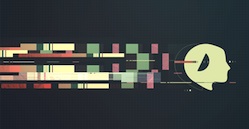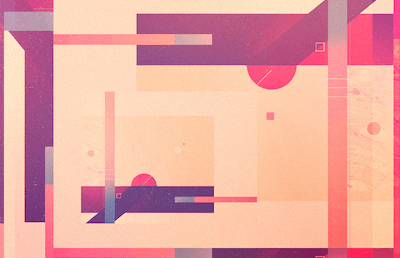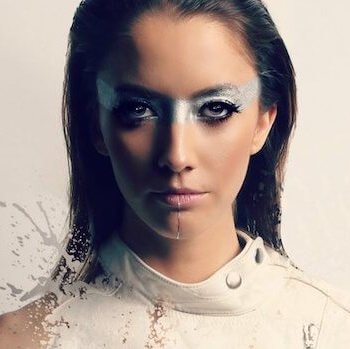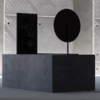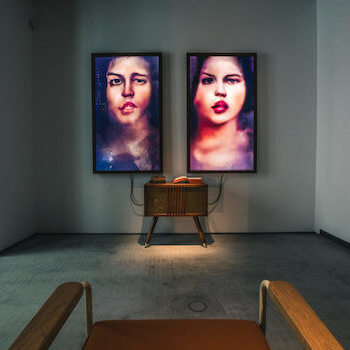AIArtists.org
The world’s largest community of artists exploring Artificial Intelligence.
We curate historically significant Artificial Intelligence art, AI art tools to use in your creative practice, and serve as a global clearinghouse for AI’s impact on art and culture. Scroll down to explore our artists and the critical questions they’re investigating, learn about AI Art history, explore ethical issues in AI, and more. AIArtists.org is curated by Marnie Benney.
Browse Our Featured Artists
View some of the most historically significant artists working with Artificial Intelligence today.
Make Your Own AI Art
Check out our tools, demos, guides, resources and AI art programs to start integrating AI into your creative practice.
History of AI Art
Explore our timeline of AI art history, which traces the origin and evolution of the movement.
Unanswered Questions
We’re collecting the most pressing questions about AI and how it may impact our future.
Building Ethical AI
We face critical challenges aligning AI with human values. Explore our list of organizations, guides and articles devoted to ethical AI.
Call For Artists
We’ve put out a call for artists addressing or using AI. We need a diverse set of voices asking questions and exploring how AI may shape our world.
Requests From The Community
Ultimate Guide to Generative Art
Discover cutting edges examples of algorithmic art, find tools you can use to start coding your own art, and discover the rich history of this field.
Best Fractal Art Generators of 2025
Explore the latest software to generate your own visually stunning fractal art, and learn how fractals express themselves in math, art and nature.
Top 25 AI Newsletters
Don’t miss a beat with the latest development in AI. We’ve curated the best resources to stay on the cutting edge.
Themes Explored By Our AI Artists
AI is not only transforming our ability to create, but posing critical questions about our relationship with technology. Will AI be our greatest invention, or our last one? Our community of artists is exploring important questions raised by Ai through their art. For example, how can AI expand human creativity? How can we use AI to mirror back our humanity and learn about ourselves? How can we avoid embedding bias and discrimination into the datasets used to train AI? How can we navigate intimacy and privacy with intelligent machines? Will AI help or hurt our chances of living sustainably on this planet?
Can AI be autonomously creative in a meaningful way? How can AI help us learn about our collective imagination? Can AI make a building become conscious? How can artists build creative and improvisational partnerships with AI? How can we ensure certain populations aren’t marginalized by AI systems? Can Ai write poetry and screenplays? Can Ai learn what moves us aesthetically, and create genuinely beautiful new forms? What does a machine see when it looks at the depth and breadth of our human experience? Can AI paintings, AI music albums or robot art be as moving as works made by humans?
Explore Some Of Our AI Artists:
Browse all of our AI artists here:
Frequently Asked Questions About AI Art:
What is Artificial Intelligence (AI) artwork?
Artificial Intelligence artwork refers to art generated with the assistance of AI. For the uninitiated, AI is a field of computer science focused on building machines that simulate human cognition and learning. AI generated art can range from autonomous creations (e.g. Ahmed Elgammal’s work) to improvisational partnerships co-created in real-time (e.g. Sougwen Chung’s work). AI artists vary widely in their mediums, from the artificial intelligence paintings of Pindar Van Arman to the AI created music of Taryn Southern to the AI poetry off Ross Goodwin.
What is machine learning?
As humans, we learn by acquiring knowledge through our senses and our personal experience. Machine learning is similar but different. Machine learning refers to computer systems that learn how to get better at a specific task over time, either through exposure to environments that provide rewards and punishments (ie. “reinforcement” learning), or through training on datasets that contain labeled data that help the computer create its own representation of ideas, information or objects (ie. “supervised” learning). Machines then use their mathematical representations of data to find patterns and make accurate guesses about things it’s never seen before. For example, a data set of images of monkeys can help a machine learn what a monkey looks like. Then when faced with a photo it’s never seen before, the machine can draw upon its understanding of what a monkey looks like – which it extracts as elements called features – and accurately predict whether the picture contains a monkey. Although a simple example, the applications are extremely powerful, and the basis of everything from self driving cars to cancer identification systems to eCommerce product recommendations. To learn more, we recommend our roundup the best books on machine learning.
What is Google Deep Dream?
Google Deep Dream is a now-famous program invented by Alex Mordvintsev, who is an engineer, researcher and artist at Google. Google Deep Dream uses computer vision technology and convolutional neural networks to find patterns in images, then iteratively enhance them. It generates trippy, almost psychedelic, dreamlike augmentations to images have become an entire subgenre of computer generated art. You can explore work that uses Google Deep Dream from Alex Mordvintsev, Mike Tyka and Daniel Ambrosi.
What is embodied AI?
Embodied AI means an artificial intelligence that can control something in physical space. For example, a body, robot arm, etc. The robots that paint with Sougwen Chung are a great example of embodied AI.
What is the Turing Test?
Imagine a machine that behaves like a human, and is indistinguishable from us. The Turing Test is a test of a machine’s ability to act like a human – such that it can’t tell the difference between the computer and human behavior. Alan Turing invented the test in 1950. If you’re interested in learning more, check out Turing’s collection of essential writings. The test has actually already been beaten for many years, even though the milestone didn’t get much press attention. Now new questions are arising, such as: can AI be creative? Can AI help solve some of our biggest problems as a species?
What is reinforcement learning?
Reinforcement learning is a method that machines can use to get smarter over time, through a system of rewards and punishments. This form of learning is extremely powerful, and similar to the way we learn as humans. Machines start off “naive” (not knowing much or anything at all), then end up improving over time as they interact with their environment. That environment can either be simulated (e.g. in a digital game) or real (e.g. a robot with physical arms). The agents autonomously optimize their behavior to achieve a certain goal more efficiently by attempting actions, then calibrating based on whether they receive a reward or a punishment. To learn more, we recommend the definitive book on reinforcement learning.
What is data science?
Data science is the study and practice of using math to draw meaning and insight out of raw data. Data science uses statistics, data mining, machine learning, and other disciplines to analyze features in a data set, with the goal of providing some kind of useful information. With so much data being recorded today, it is becoming one of the most popular and rapidly growing fields in in business. Data science and artificial intelligence are deeply linked, and AI Art is only possible because of a foundation laid by data science. Popular tools in data science include the programming language R and Python.
Is there AI art software?
Yep. You can check out some examples in our collection of resources here: how to make AI generated art. It’s getting easier and easier to make AI produced art as new tools become available that minimize the need for technical expertise. AI and art are no longer completely different fields, and new software is helping anyone with a computer merge them. Examples include GANBreeder and DeepDream Generator.
Are there AI art exhibitions?
Absolutely. Our press page links to some, and you can hire our curator Marnie Benney to curate an AI exhibition or events for you (get in touch here). They can range from full-scale AI installations at major institutions like Barbican to smaller popup shows in New York City. Given the rapid development of the field, many mind-blowing AI exhibitions are yet to come. We also have an ai art open call for artists looking to submit their work to our site.
How can I start making AI Art?
We've compiled a list of tools resources about how to make AI generated art here. For example, RunwayML lets non-coders easily use AI in their creative practice. Gene Kogan's course "ml4a" teaches beginners how to make AI art. We also include AI art generators like Deep Dream Generator and GanBreeder. which let you experiment with Style Transfer and Generative Adversarial Networks as a creative tool. And if you’re interested in the history of AI Art, check out our AI Timeline.
What is a neural network?
Neurons are brain cells that send information to each other and process sensory information. A neural network is a computer algorithm that processes information by attempting to mimic processes in our brains. Neural networks include layers of connected “neurons” or nodes that send information to each other. This is a totally different approach to computation than regular computer science algorithms, in which programmers write explicit directions telling program exactly what to do. Instead, neural networks learn what to do on their own, without any step-by-step instructions. One example of a network is a Convolutional Neural Network (CNN), which can identify objects or patterns in images – like any Facebook photos that contain your face.
What is deep learning?
Deep learning refers to neural networks with multiple layers of connected neurons. Human brains have many layers of neurons, which have trillions of potential connections between them. Similarly, in deep learning, a high number of layers make it “deep” rather than shallow.
What is an algorithm?
This refers to a sequence of step-by-step instructions. It can be as simple as the directions “turn left at the stop sign, go straight 100 feet, then enter the store.” Or it can be as complicated as a million lines of code sifting through the entire web to display relevant search results in Google. These instructions are what tell a computer what to do, how to solve problems, how to make calculations, how to display things on a screen, etc.
What is a Generative Adversarial Network (GAN)?
A Generative Adversarial Network refers to two neural networks that “compete” with each other, progressively improving the output toward a desired end goal. One network tries to generate novel output based on a training set (for example, it might try to create a new image of dog based on a dataset of puppy photos). The other network then tries to identify when that output is too different from the original training set (e.g. the first network draws a house instead of a dog). In this way, the creator network gets feedback on which of its outputs are more close to the desired outcome, getting better and better at generating look-alikes (in this case, more realistic dogs). Together they create outputs, judge their similarity to the original dataset, and repeat, making the end result astonishingly aligned with the original training set (e.g. new photo-realistic dog photos generated on the fly that have never existed before, but look exactly like real pups). GANs are used to paint, write poetry, and much more. To learn more, we recommend the book Generative Deep Learning: Teaching Machines to Paint, Write and Play. GANs are leveraged by artificial intelligence artists like Robbie Barrat to create artworks based on other existing works, either by other artists, by the artist themself, or on datasets that are not necessarily art (e.g. Google’s open image data set, or public Flickr photos).
What is a Creative Adversarial Network (CAN)?
A Creative Adversarial Network is based on a Generative Adversarial Network, but it builds randomness into the output of “creator” neural network. This generates new and often surprising outputs, attempting to mimic natural human creativity and breaking from existing forms and patterns. The output can also be trained to know what kind of novelty is good or bad (often too much randomness makes the output aesthetically uninteresting) so that its “new ideas” fall within the realm of what people will find attractive. Dr. Ahmed Elgammal is one of the leading pioneers in this research area.
Are there AI art curators?
Yes. For example, our co-founder Marnie Benney is a contemporary art curator who focuses on AI artworks and the AI art movement. If you’re interested in working with Marnie to help curate an AI exhibition, get in touch here.
Are there AI art auctions?
Yes, there have been several AI art auctions to date, including AI art auctions at Christie’s and Sotheby’s. The most famous individual AI art auction sale was a AI-generated portrait made by a French art collective called Obvious, which sold for nearly a half million dollars. The sale was a milestone cementing the validity of AI artworks in the traditional art world. It was also highly controversial, because the algorithm used to generate it was originally released as open source code by another AI artist, Robbie Barrat.
Where can I check out some AI paintings?
Several of our artists do AI paintings. Some are AI assisted paintings, while others are completely autonomous. We recommend checking out Sougwen Chung’s AI paintings, Pindar Van Arman’s AI paintings, Ahmed Elgammal’s AI paintings (art made by AI completely autonomously), or Alexander Reben’s AI paintings to start.



